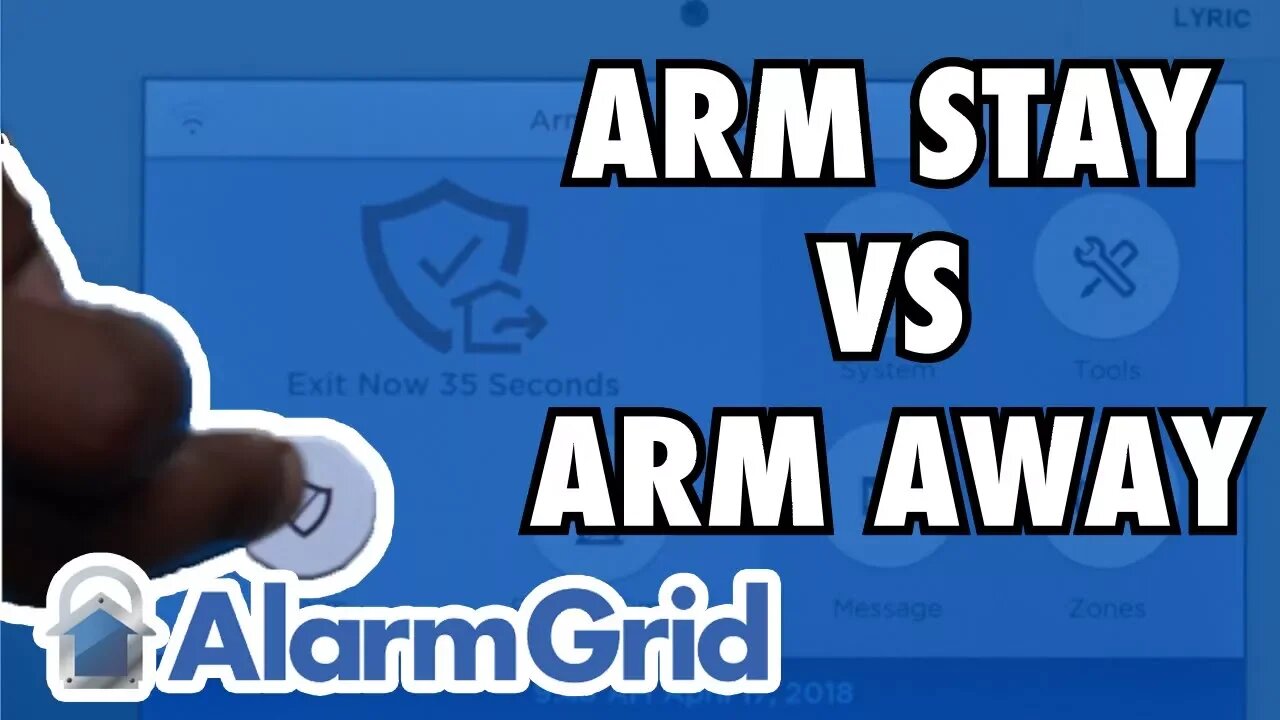Premium Only Content

Arm Stay vs Arm Away
In this video, Bryce discusses the differences between arm stay and arm away on an alarm system. These are both arming functions that can send the security system into an alarm when a programmed sensor is activated. Some sensors will only trigger an alarm when the security system is set to arm away.
For the sake of simplicity, a user will only need to think about three different states that their alarm system can be placed in. These are disarmed, armed stay and armed away. A system in a disarmed state will usually only trigger an alarm if a sensor with a very specific response type is activated. For example, a disarmed system will usually only activate an alarm if a life-safety sensor, such as a smoke detector, is activated, or if a panic button is pressed. A disarmed system can also cause an alarm if a 24-hour sensor is activated. This could be an emergency door or window that would never be opened otherwise.
However, when the system is armed, that means that certain sensors wouldn't normally be activated. The only way that these sensors would activate while the system is armed is if there is some type of break-in. Armed stay means that a user is on-site, but they do not anticipate anyone entering or exiting the property. When the system is set to armed stay, a user can activate interior sensors, such as indoor motions, and not have to worry about setting off an alarm. But if a perimeter sensor or an entry/exit sensor is activated by someone trying to break-in, then an alarm will occur on the system.
Meanwhile, a system set to arm away means that nobody is on-site and that interior sensors should not be activated. A system will trigger an alarm if a perimeter sensor is activated or if an interior sensor is activated. However, if an entry/exit sensor is activated, then an alarm will not immediately occur. Instead, the system will need to be disarmed within the system's programmed entry delay period before an alarm will occur.
Additionally, if the system is set to arm away, and an entry/exit sensor is first activated before an interior sensor is activated, then an alarm will not immediately occur. This way, a user can activate an entry/exit sensor and walk past a motion sensor to get to the keypad to disarm the system. However, the system will still need to be disarmed within the entry delay period, or else an alarm will still occur.
-
 4:37
4:37
Alarm Grid Home Security DIY Videos
2 years agoQolsys IQ Panel 4: Change the Master Code
33 -
 1:45:37
1:45:37
Badlands Media
23 hours agoDevolution Power Hour Ep. 395: Controlled Opposition, Government Shutdowns, and Trump’s Wartime Shift
161K45 -
 5:41:58
5:41:58
MattMorseTV
10 hours ago $102.68 earned🔴Antifa RIOT vs. Federal OFFICERS.🔴
182K215 -
 1:05:28
1:05:28
Man in America
12 hours agoLIVE: Digital ID & the DEATH of Freedom—An URGENT Warning
52.2K67 -
 40:24
40:24
The Connect: With Johnny Mitchell
1 day ago $5.08 earnedInside The WORST Drug-Infested Slums Of Medellin, Colombia
18K8 -
 1:43:56
1:43:56
Tundra Tactical
8 hours ago $21.22 earned🛑LIVE NOW!! FBI Gets Caught LYING About Good Guys With Guns For 10 YEARS!!!!
43.4K4 -
 2:12:01
2:12:01
BlackDiamondGunsandGear
2 days agoAFTER HOURS ARMORY / Antifa / Lies/ Prison time
25K1 -
 2:12:00
2:12:00
DLDAfterDark
8 hours ago $7.75 earnedThe After Hours Armory! Tonight is The Chat's Chat! God, Guns, and Gear!
34.5K3 -
 3:32:18
3:32:18
Mally_Mouse
11 hours ago🌶️ 🥵Spicy BITE Saturday!! 🥵🌶️- Let's Play: Phasmophobia
46.5K5 -
 1:13:19
1:13:19
iCkEdMeL
7 hours ago $17.48 earnedChaos Explodes in Chicago & Portland | Feds Clash with Protesters!
44.3K16
